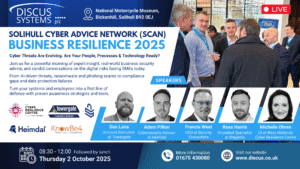Tech due diligence – the essential ingredient sought by investors

In today’s competitive M&A landscape, tech due diligence (DD) isn’t a box-ticking exercise — it’s a strategic value lever. Done well, it can build investor conviction and boost valuations. Done poorly, it can stall deals or erode value post-transaction.
Duncan Ramsay, Partner at ECI Partners, a leading mid-market private equity firm, explains:
“Tech DD isn’t just about risk mitigation, it’s about value creation. Treating it as a strategic opportunity can turn scrutiny into strength. Investors want to understand not just if your systems work, but how your technology fuels growth, resilience and innovation.”
Ramsay, part of ECI’s Commercial Team, assesses new deals and supports portfolio companies on value creation. With a tech background, he’s worked with management teams such as CPOMS, Bionic, 4Ways, Peoplesafe, and Mobysoft, helping them to get the most out of their tech stack to drive growth. Here, he outlines key investor expectations and how Tech DD can become a competitive advantage.
1. Tech as a strategic differentiator
– Link technology to strategy: Show how your tech stack underpins your commercial model. If investors can quickly grasp its purpose, they can ask better questions, faster.
– Prove scalability and resilience: Will your systems scale with growth or crack under pressure? Link your tech roadmap directly to growth projections to show how you’ll manage expansion and risks.
– Showcase innovation: Highlight outcomes from new tech or data capabilities and show how your teams innovate – not just in ideas, but in measurable impact and ROI.
Companies that articulate these elements clearly stand out in a crowded process.
2. New frontiers: what investors now expect
Tech must feel future-ready. Over the last five years, these areas have become core to investor DD frameworks and gaps here are red flags:
– Cybersecurity: Can you demonstrate robust protections, from ransomware and insider threats to third-party risks? Investors will want evidence of active risk management, e.g., pen tests, phishing exercises, incident response learnings, not just policy documents.
– AI readiness: How is AI being deployed and governed in your business? Investors increasingly assess whether AI is an enabler or a threat. A clear, documented AI strategy, backed by strong data governance, will reassure them that you’re capturing value, not courting risk.
3. Beyond the stack: people drive value
Technology doesn’t deliver results in isolation, people do. Investors are equally focused on the teams behind the platform. Expect questions around:
– Strategic alignment: Is tech embedded in your business strategy, or operating as a service function?
– Team structure and skills: How is your tech team organised? Do capabilities align with customer and business priorities?
– Experience and adaptability: How has your team handled past challenges? Are they equipped for what’s next?
These human factors are often the clearest signals of how well your business can evolve and scale.
Also, consider who should be involved during Tech DD. Some individuals may withhold detail, others get lost in it and some may say what they think investors want to hear. The CTO should lead, ensuring the right people answer the right questions and expectations are well-managed. Preparing materials ahead of time helps avoid surprises.
4. Take action now: four practical steps
Tech DD can start long before it is needed. Preparation pays dividends and putting the information on a page will prompt useful questions to resolve prior to the start of a pitch process:
– Run a DD rehearsal six to 12 months before exit to surface and fix gaps early.
– Map tech to strategy on a single slide – Make it easy for buyers to connect the dots
– Document your wins: From system uptime to migration successes, evidence builds credibility.
– Strengthen your team: If gaps exist in skills or leadership, fix them now. You won’t want to recruit mid-process.






